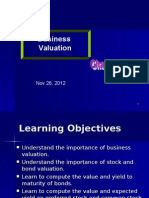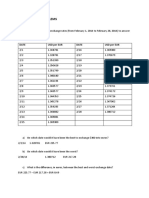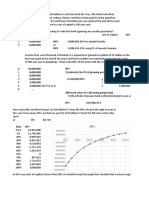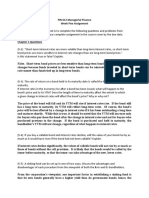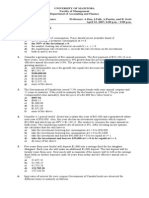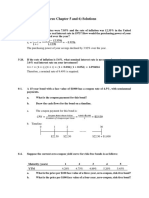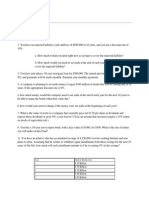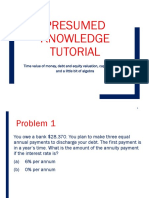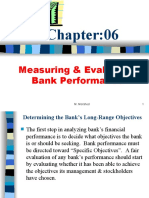0% found this document useful (0 votes)
16 views16 pagesTutorial 3 - Post-Tutorial Slides
The document contains various finance tutorials focusing on yield to maturity calculations for bonds, price evaluations, and arbitrage opportunities. It discusses concepts such as zero-coupon bonds, coupon rates, and the implications of bond ratings on pricing. Additionally, it covers investment analysis techniques like NPV, IRR, and payback periods in different financial scenarios.
Uploaded by
m.guerreroleyvaCopyright
© © All Rights Reserved
We take content rights seriously. If you suspect this is your content, claim it here.
Available Formats
Download as PDF, TXT or read online on Scribd
0% found this document useful (0 votes)
16 views16 pagesTutorial 3 - Post-Tutorial Slides
The document contains various finance tutorials focusing on yield to maturity calculations for bonds, price evaluations, and arbitrage opportunities. It discusses concepts such as zero-coupon bonds, coupon rates, and the implications of bond ratings on pricing. Additionally, it covers investment analysis techniques like NPV, IRR, and payback periods in different financial scenarios.
Uploaded by
m.guerreroleyvaCopyright
© © All Rights Reserved
We take content rights seriously. If you suspect this is your content, claim it here.
Available Formats
Download as PDF, TXT or read online on Scribd
/ 16




















